Experience the breathtaking beauty of Nepal with the Mardi Himal Short Trek, a perfect blend of natural splendor and cultural immersion. This trek takes you through lush forests adorned with rhododendrons and oaks, offering stunning vistas of the majestic Annapurna range, including the iconic Machapuchare peak. Along the way, you’ll stay in cozy teahouses, providing a glimpse into the warm hospitality of the local Gurung and Magar communities. With altitudes reaching up to 4,500 meters at Mardi Himal Base Camp, this trek is ideal for those seeking moderate challenges and unforgettable views. Accessible from Pokhara, this 5-7 day adventure promises an off-the-beaten-path experience that captures the heart of Nepal’s natural and cultural wonders.
Discover the Mardi Himal Short Trek, where every step leads to new heights of awe-inspiring landscapes and authentic encounters. Whether you’re a beginner trekker or a seasoned adventurer, this trek offers a manageable journey into Nepal’s wilderness. Traverse forested trails ablaze with rhododendron blooms and ancient oaks, culminating in panoramic views of the Annapurna mountains and Machapuchare’s distinctive peak. Embrace the local charm as you rest in traditional teahouses and connect with Gurung and Magar villages along the route. Perfect for those short on time yet eager for adventure, this trek from Pokhara unveils the best of Nepal’s natural beauty and cultural heritage, promising an experience that lingers long after the journey ends.
Mardi Himal Short Trek Highlights
- Enjoy stunning vistas of the Annapurna range, including the Machhapucchhre (Fishtail) peak.
- Immerse yourself in the local Gurung and Magar communities and their traditional way of life.
- Unique Flora and fauna on the trekking trail.
- Experience the beauty of the trek with stunning panoramic views
- Enjoy an adventurous journey with challenging yet rewarding terrain.
Best time for Mardi Himal Short Trek
The best time to trek the Mardi Himal is during the spring and autumn seasons in Nepal. These periods offer the most favorable weather conditions, clear skies, and optimal temperatures for trekking.
Spring Season (March to May)
Spring is one of the most popular times to trek in the Annapurna Region, which includes the Mardi Himal Short Trek. During this season:
- Weather Conditions: The weather is generally mild and pleasant, with daytime temperatures ranging from 15°C to 25°C at lower elevations, while higher elevations are cooler.
- Clear Views: The skies are typically clear, providing stunning views of the surrounding mountains, including Annapurna I, Annapurna III, Annapurna IV, Dhaulagiri, and Machhapuchhre.
- Flora: The rhododendron forests are in full bloom, creating a vibrant landscape with colorful flowers and lush greenery.
- Crowds: This is a popular trekking season, the Mardi Himal Short trekking trail remains more crowded than other treks in the Annapurna Region.
Autumn Season (September to November)
Autumn is another ideal time to trek the Mardi Himal Short Trek. During this season:
- Weather Conditions: The weather is stable with clear skies, low humidity, and pleasant temperatures, similar to spring. Daytime temperatures range from 10°C to 20°C at lower elevations, while it is cooler at higher altitudes.
- Clear Views: Autumn is known for its crisp air, providing excellent visibility of the surrounding peaks and landscapes.
- Festivals: This season aligns with major Nepali festivals like Dashain and Tihar, offering cultural insights and opportunities to experience local traditions.
- Crowds: Autumn is the peak trekking season in Nepal, the Mardi Himal Short Trek trail is more crowded compared to other treks.
Off-Season Considerations
While spring and autumn are the best time for the Mardi Himal Short Trek, some trekkers prefer off-season trekking for a unique experience. However, these periods come with challenges:
- Winter Season (December to February): Trekking in winter offers solitude and stunning snowy landscapes, but temperatures can drop significantly, especially at higher elevations. Trails might be icy, and some teahouses could be closed.
- Monsoon Season (June to August): The monsoon brings heavy rain, making trails slippery and increasing the risk of landslides and leeches. The clouds and rain can also obstruct mountain views.
Overall, spring and autumn offer the best combination of weather, views, and cultural experiences, making them the ideal times to trek the Mardi Himal. If you’re planning a trip during the off-season, be prepared for additional challenges and always check weather forecasts and trail conditions in advance.
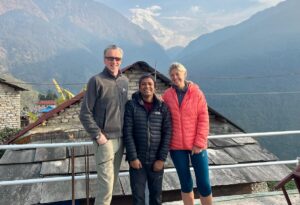 Trekking
Trekking
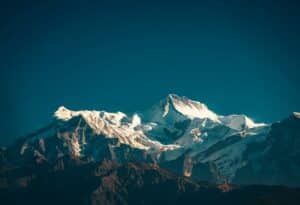
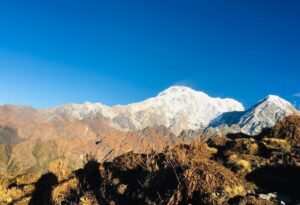 Trekking
Trekking
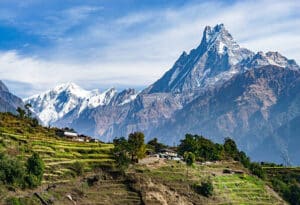
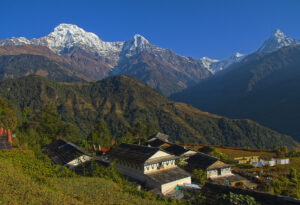 Trekking
Trekking
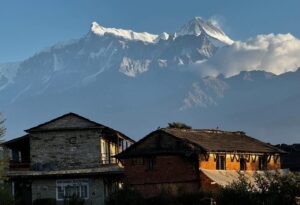 Trekking
Trekking
